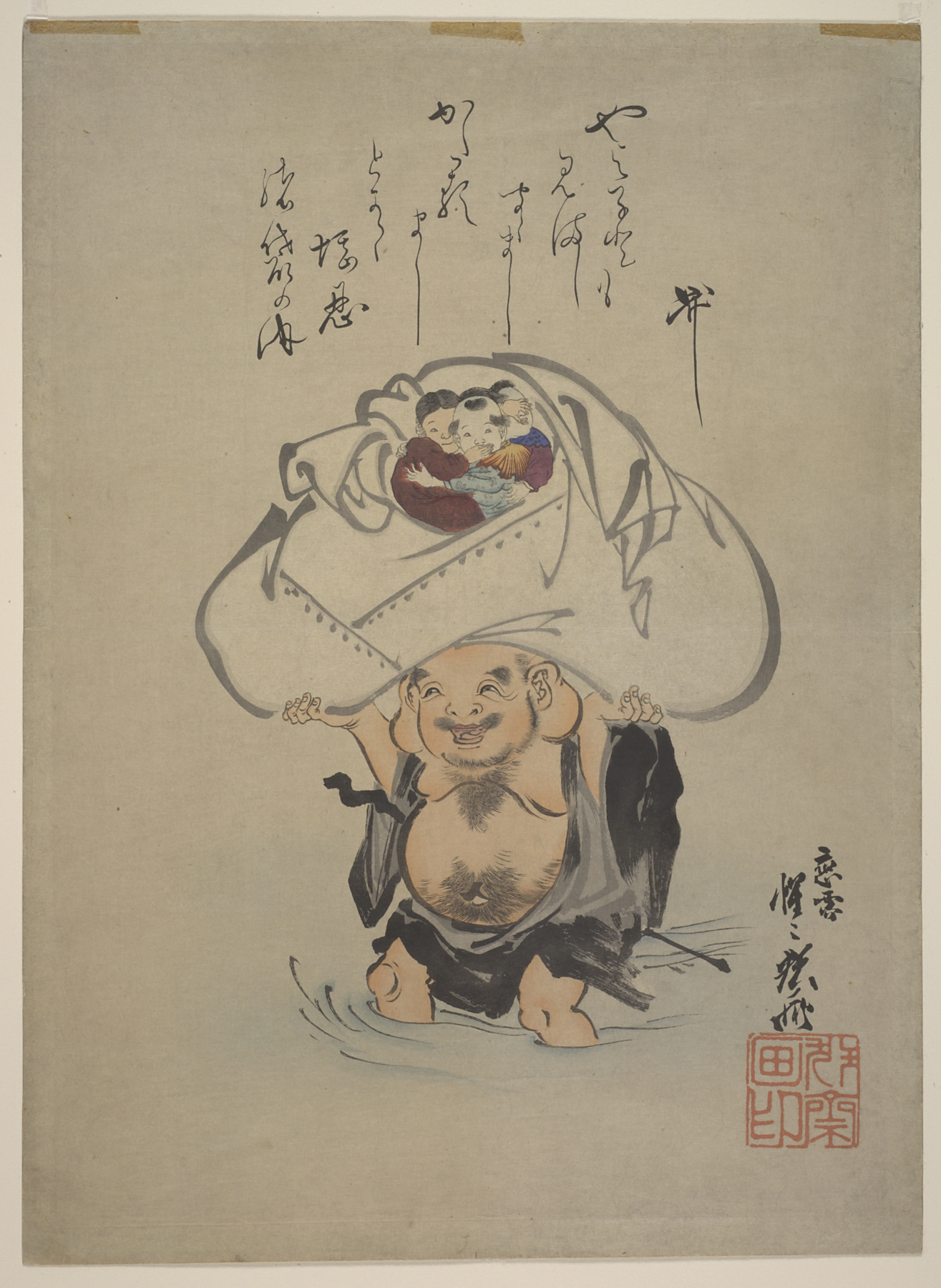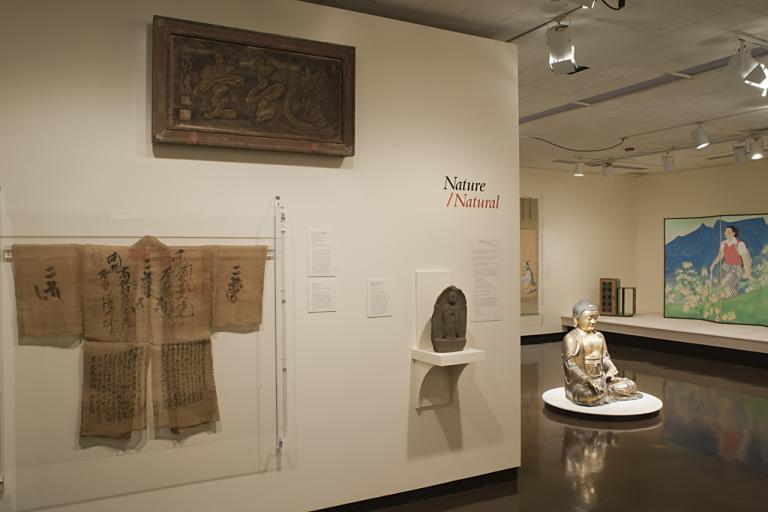Hotei carrying three children across a stream in a bag on his head, Kawanabe Kyōsai
Artwork Overview
Kawanabe Kyōsai, artist
1831–1889
Hotei carrying three children across a stream in a bag on his head,
circa 1880s or 1890s, Meiji period (1868–1912)
Where object was made: Japan
Material/technique: color woodcut
Dimensions:
Sheet/Paper Dimensions (Height x Width): 495 x 359 mm
Mat Dimensions (Height x Width): 25 x 20 in
Sheet/Paper Dimensions (Height x Width): 495 x 359 mm
Mat Dimensions (Height x Width): 25 x 20 in
Credit line: Source unknown
Accession number: 0000.1963
Not on display
If you wish to reproduce this image, please submit an image request







